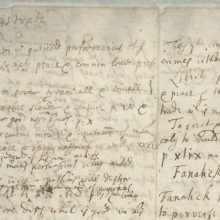
Photo from archive.org
to spend a considerable amount of space summarizing the long histories of the bodies and burials in question. This causes her ostensible focus on the period after 1700 to be… Click to show full abstract
to spend a considerable amount of space summarizing the long histories of the bodies and burials in question. This causes her ostensible focus on the period after 1700 to be at times obscured, as in several chapters she turns to it in their final pages. It also means that, although the chapters are arranged roughly chronologically by the dates of the respective disinterments, there is some redundancy and little sense of change over time. Late eighteenth-century conceptions of the English past, though also reliant on medieval and Tudor precedent, were very different from late Victorian ones, but this is not always apparent in Tomaini’s work. Nor is a key aspect of Tomaini’s case—that corpses were “texts” that could be read in various ways—as revelatory as she claims. Rather, it is an interesting and important but ultimately conventional point about the complexity of interpreting the past dressed up in the fashionable lingo of present-day literary criticism. (In Tomaini’s defense, she generally employs a light touch with jargon.) But these caveats aside, the best chapters in The Corpse as Text are well worth perusing. The debate over the identity of the bones in Canterbury Cathedral served as an uncomfortable reminder that England had not always been Protestant, complicating the relationship between the (Protestant) present and the (Catholic) pre-Reformation past. The corpses of Katherine de Valois, Anne Boleyn, and Katherine Parr raised challenging questions about female political power and sexuality, while those of Charles I and Oliver Cromwell reactivated the still-relevant debate over the proper balance between monarchical and parliamentary power. Tomaini is not a historian, and there are times when her sense of the specific context of a particular disinterment could be more detailed. In general, however, her treatments of the individual case studies are sharp and insightful, as well as readable and full of entertaining and amusing detail. One cannot help but sometimes feel sorry for the deceased, as the antiquarian investigators themselves not only behaved in ways that we would find disrespectful, but also frequently uncovered evidence of grave robbing and other cavalier disturbances of their mortal remains. But their zeal to uncover the “truth”—was Anne Boleyn really buried with her head tucked under her arm?—was matched by the reluctance of the dead to yield up their secrets. In none of the cases that Tomaini describes was a clear answer obtained to the question or questions that had justified the disinterment of the corpse. The bones of the dead should have provided the ultimate empirical evidence of “what really happened.” Instead, disinterment almost always served only to intensify debate about the past, and the present.
Journal Title: Journal of British Studies
Year Published: 2018
Link to full text (if available)
Share on Social Media: Sign Up to like & get
recommendations!